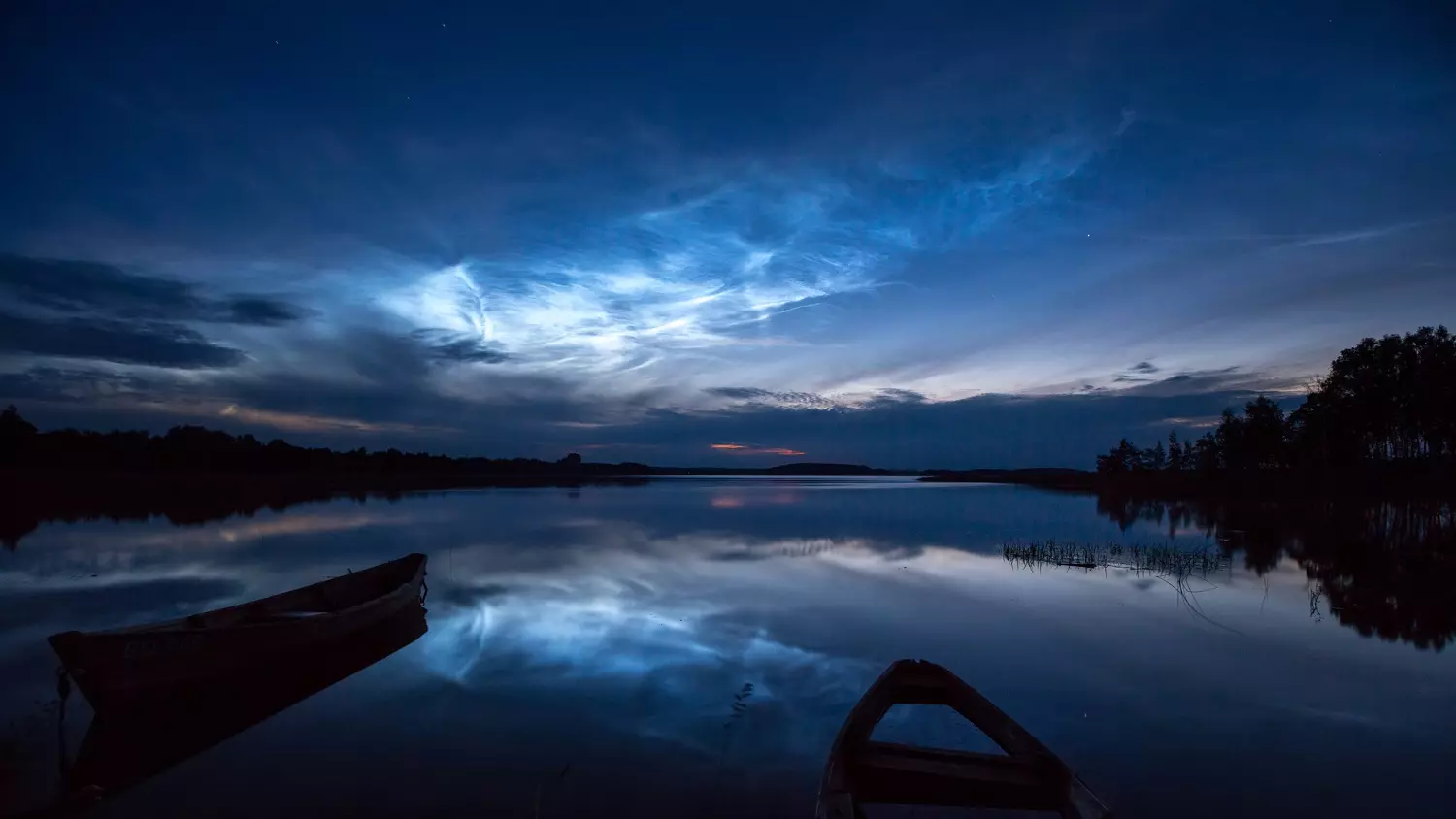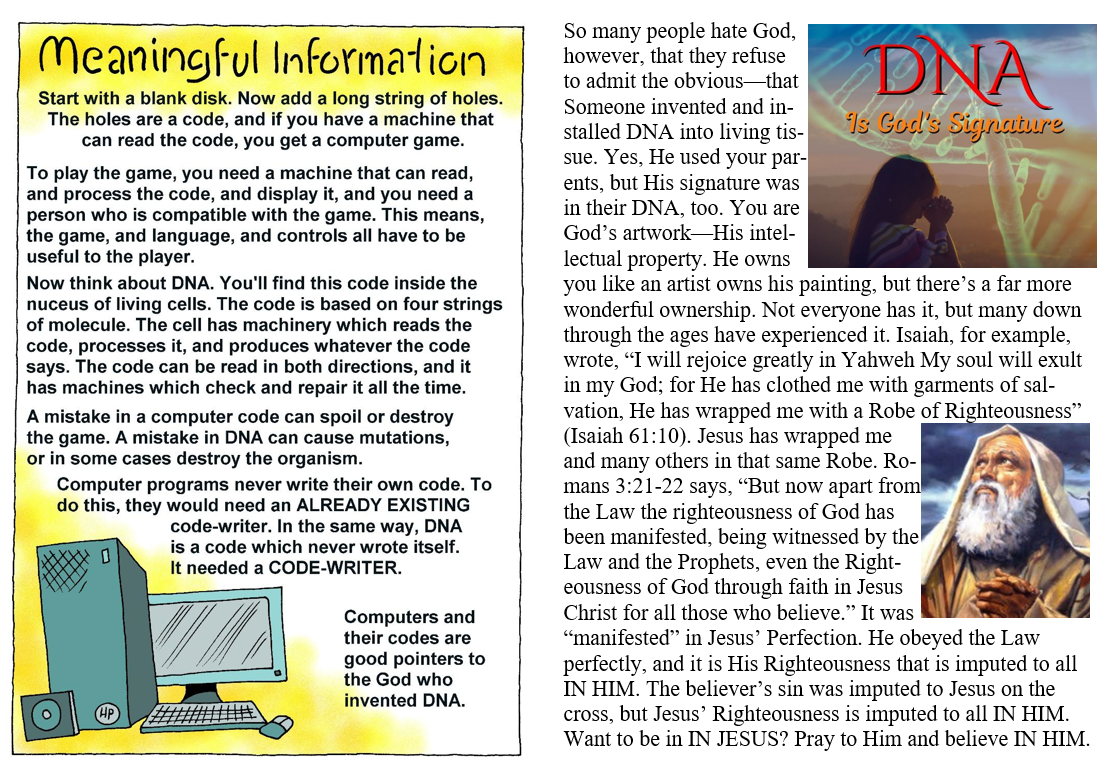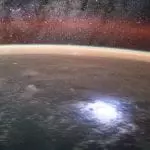[Originally published in 2018 as Clouds that “Glow” in Twilight are Becoming More Common]
The picture above shows a phenomenon that can be seen during the summer by people who live at latitudes of 50-65 degrees. They are called noctilucent (“night shining”) clouds, and they appear to glow in the twilight sky.
They aren’t actually glowing, and they aren’t really clouds, either.
Instead, they are bands of ice crystals that are way above the clouds, in an upper part of the atmosphere called the mesosphere. There is very little water in the mesosphere, and it is extremely cold there. When conditions are right, however, what little water that exists there can freeze into tiny ice crystals, forming short-lived “clouds.”
Why do they appear to glow?
At twilight, the sun is below the curve of the earth, so you can’t see it directly. However, if you were up higher, you could still see it. Indeed, this video shows a drone observing the sunset at a height of 80 feet and then rising to 400 feet to see the sun set again. So even though you can’t see the sun once it sets, higher altitudes still “see” it.
That means the sun’s light is still shining brightly on things that are high in the sky, including the ice crystals. Some of that light scatters off the crystals and heads to the earth. If you are at the right place on the earth and it is dark enough, you can see that light, and it looks like the light is coming from the “clouds” themselves. Here is an excellent time-lapse series that shows both noctilucent clouds and an aurora.
2018 was an unusually good year for seeing it. Indeed, reports of these “glowing clouds” tripled that year compared to previous year. What caused it? According to Dr. Lynn Harvey of Colorado’s Laboratory for Atmospheric and Space Physics, it was because there was an unusual amount of water in the mesosphere that year. It was also a bit colder than normal.
Combine those two effects and you have more ice crystals and therefore more noctilucent clouds.
Why was it wetter and colder in the mesosphere during 2018? We don’t really know.
In fact, noctilucent clouds are a bit of a mystery in general, since they were first reported in the summer of 1885. Whether this means they just started forming then or just happened to be noticed then, we don’t know. However, most other striking atmospheric phenomena had been observed much earlier. Auroras, for example, were reported in ancient china and were named by Galileo in 1619. It’s hard to believe that a similar atmospheric phenomenon that can be seen at the same latitudes existed but remained unnoticed until 1885.
Of course, unlike auroras, noctilucent clouds are rare and short-lived. After all, they occur only in the summer and, in order to see them, it needs to be pretty dark, since sunlight overwhelms the small amount of light coming from the ice crystals. Thus, the sun has to be below the curve of the earth for the observer. However, once the sun is well below the curve of the earth, it no longer shines on the ice crystals in the mesosphere above the observer. This fact might have made them less likely to be observed and, even when they were observed, less likely to be believed, since they would “disappear” after a while.
So it may be that noctilucent clouds clouds are a fairly recent phenomenon caused by human activity, and it may be that whatever human activity is causing them is increasing their frequency.
Of course, it may also be a natural phenomenon that ebbs and flows over time. We just don’t know. That’s the great thing about science. There always seem to be more questions than answers!






